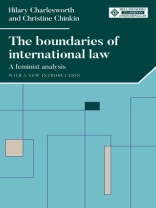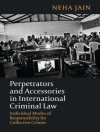In the first book-length treatment of the application of feminist theories of international law, Charlesworth and Chinkin argue that the absence of women in the development of international law has produced a narrow and inadequate jurisprudence that has legitimated the unequal position of women worldwide rather than confronting it.
The boundaries of international law provides a feminist perspective on the structure, processes and substance of international law, shedding new light on treaty law, the concept of statehood and the right of self-determination, the role of international institutions and the law of human rights. Concluding with a consideration of whether the inclusion of women in the jurisdiction of international war crimes tribunals represents a significant shift in the boundaries of international law, the book encourages a dramatic rethinking of the discipline of international law.
With a new introduction that reflects on the profound changes in international law since the book’s first publication in 2000, this provocative volume is essential reading for scholars, practitioners and students alike.
Tabela de Conteúdo
Foreword – Elizabeth Evatt, Human Rights Committee
Preface
Introduction to the 2022 edition
1 Women and the international legal system
2 Feminist theories and international law
3 Modes of international law-making
4 The law of treaties
5 The idea of the state
6 International institutions
7 Human rights
8 The use of force in international law
9 Peaceful settlement of disputes
10 Redrawing the boundaries of international law
Bibliography
Table of cases
Table of treaties
Index
Sobre o autor
Christine Chinkin is Professor of International Law at the London School of Economics and Political Science












